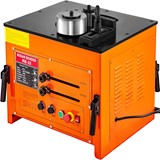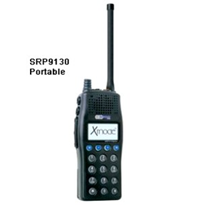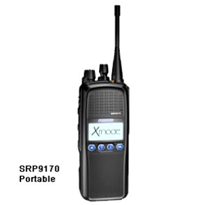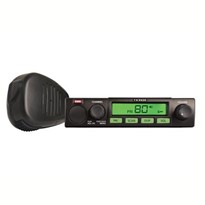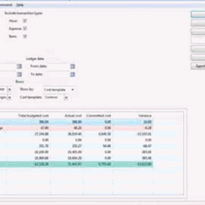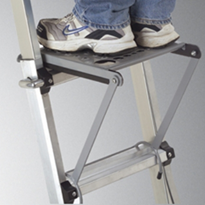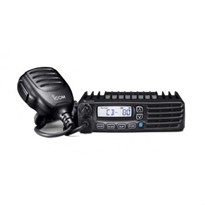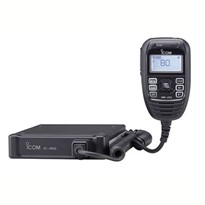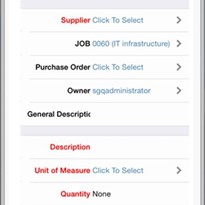Though reminiscent of a sci-fi movie, this scene represents the brainchild of Mike Gottwald, Corporate Engineer for RiverStone Group Inc. a subsidiary of Central Stone, a sand and gravel company in West Quincy, Missouri.
The new system became fully operational in May 2003. Using MicroSoft Access and Excel in conjunction with Allen-Bradley’s RSView, they now have production reports which were never available before. “It has definitely increased our data gathering capabilities and allowed us flexibility in the use of the man-power needed to run this operation, saving us approximately $100,000 per year,” said Gottwald. “Also, with the old system the pipe would get plugged several times a day. Now, as fast as ControlLogix is, we can anticipate plugs and we haven’t had one since the new system went on-line.”
“I’m new to the mining industry,” said Gottwald. “So, when I started to work here I asked a lot of questions.” Gottwald was surprised to learn that most of the technology used in the dredging operation was over 30-years-old and obsolete. Everything was done manually, with no way to even measure pressure or flow from each of the pumps. When he asked the dredge operator how he could see what he was digging into under the water, he was told that they “felt” their way along.
Much of the Convac system controlling the vacuum at the cutter head inlet needed to be replaced. The electrically operated control valve and control panel were a proprietary system that was inadequate for the needs of the operation. The old angle sensor on the cutter head also needed to be removed. Since the dredge rises and falls when the cutter head is touching bottom or free floating it was impossible to determine a true cutter arm angle.
Going Wireless
In order to solve these problems, improve efficiency and coordinate the dredging with the classifying plant, a fully automatic system was needed. The first change Gottwald was determined to make involved installing radios in the dredge to communicate with the pumps and the classifying plant.
“I wanted to use wireless,” said Gottwald, “because wire is such a big headache.” Gottwald started with consumer-grade radios. “The classifying plant is on the other side of a major highway. The consumer radios were a disaster. They shut off when a plane flew by.
“We had several industrial radio companies look at this application. Some told us it couldn’t be done. Others told us we would need expensive repeaters. ProSoft Technology came along and simply did it. ProSoft’s RadioLinx modems are by far the most robust radios I have ever found. RadioLinx is a complete wireless Ethernet package. For this application it was just plug and play.”
“Every wireless application is unique,” said Wally Gastreich, RadioLinx Application Engineer for ProSoft. “It is imperative that any company providing wireless communication know the specifics of the application. Critical information that should be considered before purchasing a wireless network include: How far does data need to be transmitted? Are there any obstacles such as buildings or mountains impairing line-of-sight between radios? In what type of application will the radios be used, i.e. oil and gas pipeline, manufacturing plant, electric welding, etc. If the integrator does the proper leg-work up front, the reliability of the radios is a given.”
A RadioLinx Ethernet modem was placed at the classifying plant, the pump station and on the dredge. The classifying plant is nearly half mile away from the dredge, which sits down in the water-filled quarry. In order to achieve line-of-sight between the two, the antenna at the classifying plant was placed on top of its 70 foot height. Another antenna was placed on the barge and a third at the remote booster pump station. No repeaters were needed.
“We’re seeing an increased demand for our industrial wireless radios,” said ProSoft Technology’s Ken Majerus. “Their durability in all climates combined with the flexibility of remote configuration and PLC programming make them perfect for applications that need real-time access to remote, difficult to reach or moving equipment. The versatility of their short and long-range antenna combinations allow local data to be transmitted up to 15 miles to a base station or further with single radio repeaters.”
Once Gottwald knew he could install a reliable radio system, he contacted Van Meter Industrial, an Allen-Bradley Distributor in Iowa. “I like working with Allen-Bradley,” said Gottwald. “In my career as a contractor I’ve had great success with A-B. They always have a solution to any application.”
Updating the Automation
Carl Schmidt from Van Meter Industrial and Ken Majerus from ProSoft Technology assisted Gottwald in choosing the automation needs for the new system. A 200R Industrial PC was installed in the classifying plant communicating with an A-B SLC 5/03 processor. This data, including plant processes and production reports, is viewed via RSView on a VersaView 1700M. A ControlLogix processor was installed at the dredge communicating with another VersaView monitor. A MicroLogix processor was installed at the remote booster pump station to monitor pressure and flow and allows the pump to be started and stopped from either the dredge or the classifying plant.
The Classifying Plant
The new PC in the classifying plant serves several functions:
- It provides a Graphical User Interface (GUI) through a touch screen monitor. The GUI enables operators to change states of the field devices (manual, off, auto), and change variables that affect the process such as gravel product pile locations, classifying cell timers, etc.
- The PC collects data from field devices such as the remote booster PSI, TPH from the product scales, downtime, etc.
- All of the classifying plant control tags are served to the dredge PC so that remote viewing and control of the classifying plant is obtained. The classifying plant PC also provides all the information from the remote dredge PC allowing operators to view all dredge information as well such as pump speed, motor amps, cutter head depth, etc.
The Dredge
Along with the automation upgrades the dredge also underwent a major electrical overhaul. The pushbutton type control system was removed. A processor/PC based system was implemented to accomplish a one button startup. All dredge motors and pumps are now all started with the touch of a button. The PC monitors flow, pressure, and motor amps on all devices, ensuring that the start sequence works every time without damage to equipment.
A new Convac system was installed to replace the 30-year-old, proprietary equipment.
“The new Convac system works with ‘off-the-shelf’ standard hydraulics and a new multivariable control scheme,” said Gottwald. “I had the opportunity to see the valve work with a material cave-in and the new system handled it in a rapid and controlled manner.”
Complete Control
Now the fully automated dredge can run, not only the dredging operation, but also the booster pumps as well as the entire classifying plant via the radios. Sonar was installed on the dredge, which is displayed on the VersaView monitor via RSView, giving the operator a clear view of the cutting arm and the sandy quarry bottom.
“We also installed a positioning sensor on the dredge that uses the magnetic field of the earth to tell us the heading of the dredge, its pitch and yaw and the angle of the cutting arm,” said Gottwald. “This allows us to know the exact depth of the sand at any given time.”
With all this new technology, the efficiency and cost-effectiveness of the operation has been greatly increased. As Gottwald put it, “Now all the dredge operator has to do is drive the boat!”
Gottwald is planning another similar application before the end of the year at their quarry in Molene, Illinois, dredging sand from the Mississippi River.



